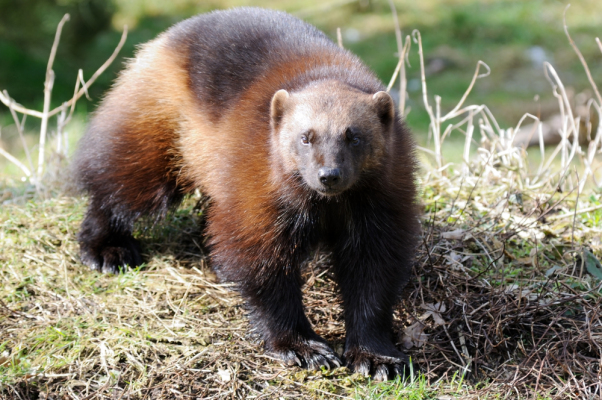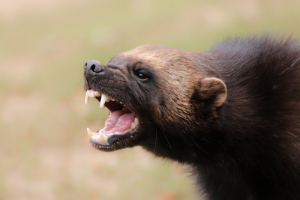
Introduction
The wolverine’s scientific name is “Gulo gulo” (Latin for glutton). Wolverines are found throughout much of North America and Eurasia. They proudly hold the title of world’s largest weasel, with the large males commonly documented at over three feet-long.
Despite the superhero of the same name’s temperament, wolverines are solitary, nocturnal creatures that are rather mild-mannered unless provoked. In cases where the wolverine’s family or habitat are threatened by predation, both male and female members of the species will aggressively stand their ground.
Scientific Classification
The wolverine is one among many members of the Animalia kingdom, falling squarely within the Chordata phylum and Mammalia class. They are carnivores of the Mustelidae family, with a genus label of Gulo. One might be surprised to learn that the only remaining, non-extinct mammal in the Gulo genus is the wolverine, a fact that poetically complements their singular lifestyles.
Background
As their preferred habitat in both North America and Eurasia is the forest. The wolverine has adapted over time to become sensationally efficient sentries of their territories. In fact, a fully matured wolverine is capable of taking down predators many times its own body size.

Similarly, wolverines are accomplished scavengers. They are known to sneak into nests at night and rob them completely of their eggs. They are also capable of quickly moving across many types of terrain, effortlessly catching their prey and rendering them inert with sharp teeth and piercing claws.
As mentioned, wolverines are solitary creatures who rarely congregate for any other purpose than to mate. Mothers will raise their young for a short period of time, until their kits are able to hunt and scavenge for themselves, after which point, the mother will again return to its independent lifestyle.
Dimensions and Lifespan
The wolverine can be found in a variety of sizes, depending on the surrounding habitat. Most wolverines will grow to be between 64 and 107 centimeters, and weigh anywhere from 5.5 to 35 kilograms. The tail is 17 to 26 cm.
Their lifespan is equally as varied, as they have no known natural predators; however, most reports suggest the wolverine’s average life will sunset around 13 years of age.
Terminologies
Male wolverines are simply referred to by their moniker, while females are sometimes called angelines. Their young, similar to other mammals of like size, are called kits.
Behaviors
Wolverines are nocturnal, lonesome, and highly territorial. But guarding their home base is no easy task, as well-to-do wolverines are known to lay claim to boundaries ranging as wide as 1,000 square miles!
Wolverines mark their territories with urine and pheromones from the anal gland, and while both males and females will surely put up a fight when threatened, males are especially prone to aggression if confronted by another male.
Reproduction
Mating for wolverines happens between the later spring and summer months of April through September. In contrast to their normally secluded behavior, males and females will remain united for a few days after intercourse. A male will usually attempt to mate with two to four females residing within its territory, occasionally venturing out of bounds into competing territories. Females burrow into the snow or brush to hide their young from large predators such as bears and wolves.
Communication
Wolverines mark their homes and food caches with scents from their anal glands. Scent plays a large role in the wolverine’s way of life, as their nocturnal nature leads scientists to believe their eyesight is likely poor. Further, wolverines have adequate hearing on par with other mustelids.
As they are not particularly social creatures, wolverines have not developed an advanced way of communicating with one another, although males and females alike possess the ability to bark at objects that they perceive as threats.
